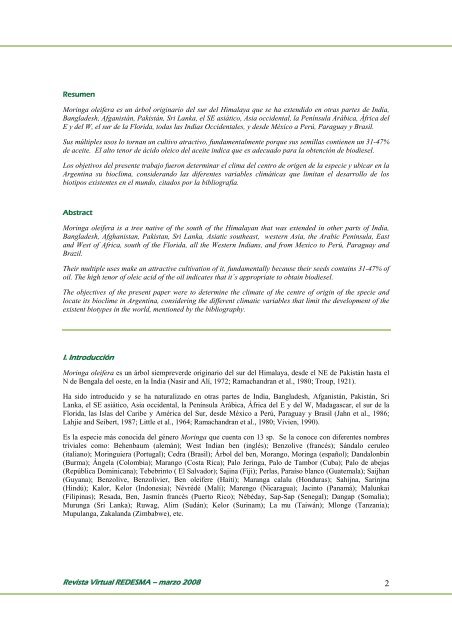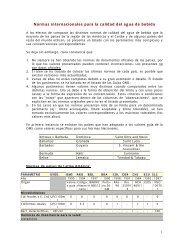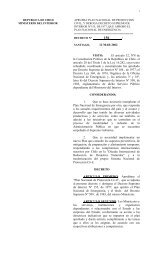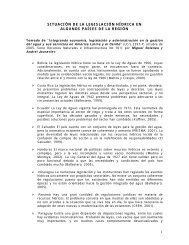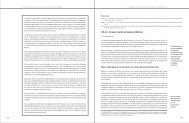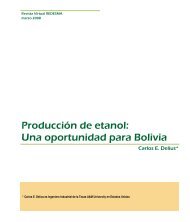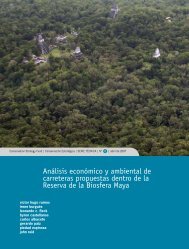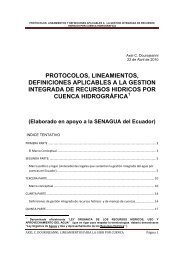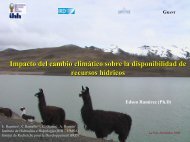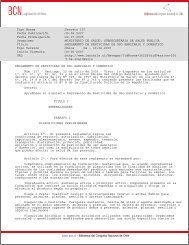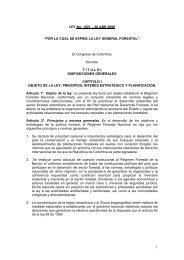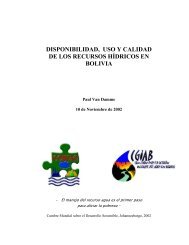Potenciales usos y delimitación del área de cultivo de Moringa ...
Potenciales usos y delimitación del área de cultivo de Moringa ...
Potenciales usos y delimitación del área de cultivo de Moringa ...
You also want an ePaper? Increase the reach of your titles
YUMPU automatically turns print PDFs into web optimized ePapers that Google loves.
Resumen<br />
<strong>Moringa</strong> oleifera es un árbol originario <strong><strong>de</strong>l</strong> sur <strong><strong>de</strong>l</strong> Himalaya que se ha extendido en otras partes <strong>de</strong> India,<br />
Bangla<strong>de</strong>sh, Afganistán, Pakistán, Sri Lanka, el SE asiático, Asia occi<strong>de</strong>ntal, la Península Arábica, África <strong><strong>de</strong>l</strong><br />
E y <strong><strong>de</strong>l</strong> W, el sur <strong>de</strong> la Florida, todas las Indias Occi<strong>de</strong>ntales, y <strong>de</strong>s<strong>de</strong> México a Perú, Paraguay y Brasil.<br />
Sus múltiples <strong>usos</strong> lo tornan un <strong>cultivo</strong> atractivo, fundamentalmente porque sus semillas contienen un 31-47%<br />
<strong>de</strong> aceite. El alto tenor <strong>de</strong> ácido oleico <strong><strong>de</strong>l</strong> aceite indica que es a<strong>de</strong>cuado para la obtención <strong>de</strong> biodiesel.<br />
Los objetivos <strong><strong>de</strong>l</strong> presente trabajo fueron <strong>de</strong>terminar el clima <strong><strong>de</strong>l</strong> centro <strong>de</strong> origen <strong>de</strong> la especie y ubicar en la<br />
Argentina su bioclima, consi<strong>de</strong>rando las diferentes variables climáticas que limitan el <strong>de</strong>sarrollo <strong>de</strong> los<br />
biotipos existentes en el mundo, citados por la bibliografía.<br />
Abstract<br />
<strong>Moringa</strong> oleifera is a tree native of the south of the Himalayan that was exten<strong>de</strong>d in other parts of India,<br />
Bangla<strong>de</strong>sh, Afghanistan, Pakistan, Sri Lanka, Asiatic southeast, western Asia, the Arabic Peninsula, East<br />
and West of Africa, south of the Florida, all the Western Indians, and from Mexico to Perú, Paraguay and<br />
Brazil.<br />
Their multiple uses make an attractive cultivation of it, fundamentally because their seeds contains 31-47% of<br />
oil. The high tenor of oleic acid of the oil indicates that it´s appropriate to obtain biodiesel.<br />
The objectives of the present paper were to <strong>de</strong>termine the climate of the centre of origin of the specie and<br />
locate its bioclime in Argentina, consi<strong>de</strong>ring the different climatic variables that limit the <strong>de</strong>velopment of the<br />
existent biotypes in the world, mentioned by the bibliography.<br />
I. Introducción<br />
<strong>Moringa</strong> oleifera es un árbol siemprever<strong>de</strong> originario <strong><strong>de</strong>l</strong> sur <strong><strong>de</strong>l</strong> Himalaya, <strong>de</strong>s<strong>de</strong> el NE <strong>de</strong> Pakistán hasta el<br />
N <strong>de</strong> Bengala <strong><strong>de</strong>l</strong> oeste, en la India (Nasir and Alí, 1972; Ramachandran et al., 1980; Troup, 1921).<br />
Ha sido introducido y se ha naturalizado en otras partes <strong>de</strong> India, Bangla<strong>de</strong>sh, Afganistán, Pakistán, Sri<br />
Lanka, el SE asiático, Asia occi<strong>de</strong>ntal, la Península Arábica, África <strong><strong>de</strong>l</strong> E y <strong><strong>de</strong>l</strong> W, Madagascar, el sur <strong>de</strong> la<br />
Florida, las Islas <strong><strong>de</strong>l</strong> Caribe y América <strong><strong>de</strong>l</strong> Sur, <strong>de</strong>s<strong>de</strong> México a Perú, Paraguay y Brasil (Jahn et al., 1986;<br />
Lahjie and Seibert, 1987; Little et al., 1964; Ramachandran et al., 1980; Vivien, 1990).<br />
Es la especie más conocida <strong><strong>de</strong>l</strong> género <strong>Moringa</strong> que cuenta con 13 sp. Se la conoce con diferentes nombres<br />
triviales como: Behenbaum (alemán); West Indian ben (inglés); Benzolive (francés); Sándalo ceruleo<br />
(italiano); Moringuiera (Portugal); Cedra (Brasil); Árbol <strong><strong>de</strong>l</strong> ben, Morango, <strong>Moringa</strong> (español); Dandalonbin<br />
(Burma); Ángela (Colombia); Marango (Costa Rica); Palo Jeringa, Palo <strong>de</strong> Tambor (Cuba); Palo <strong>de</strong> abejas<br />
(República Dominicana); Tebebrinto ( El Salvador); Sajina (Fiji); Perlas, Paraíso blanco (Guatemala); Saijhan<br />
(Guyana); Benzolive, Benzolivier, Ben oleifere (Haiti); Maranga calalu (Honduras); Sahijna, Sarinjna<br />
(Hindú); Kalor, Kelor (Indonesia); Névrédé (Malí); Marengo (Nicaragua); Jacinto (Panamá); Malunkai<br />
(Filipinas); Resada, Ben, Jasmín francés (Puerto Rico); Nébéday, Sap-Sap (Senegal); Dangap (Somalia);<br />
Murunga (Sri Lanka); Ruwag, Alim (Sudán); Kelor (Surinam); La mu (Taiwán); Mlonge (Tanzania);<br />
Mupulanga, Zakalanda (Zimbabwe), etc.<br />
Revista Virtual REDESMA – marzo 2008 2


